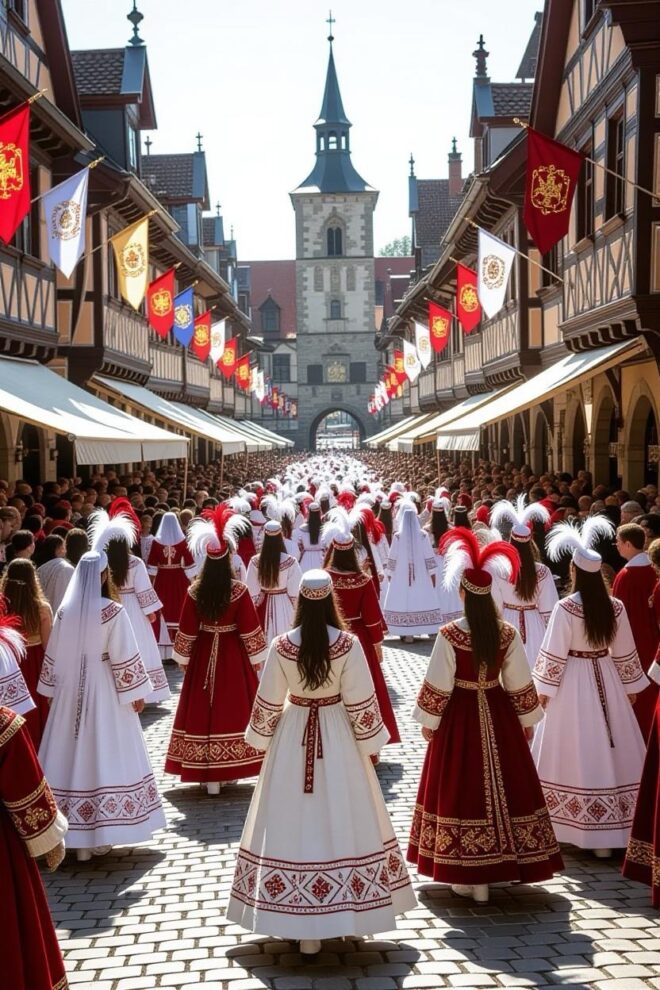
For many people, the word “white” functions as if it were a natural category, a tidy label that indicates both biology and culture, a two-in-one shorthand that supposedly tells us who belongs where and what they should value. That convenience is seductive: it reduces complexity, assigns people to boxes, and appears to provide a quick explanation for social patterns. It is also inaccurate. To take “white” as an immutable category is to conflate three different things, biology, culture, and social power, and to ignore the ways in which each is far more contingent and contested than the label implies.
The scientific basis for racial categories is weak. Modern genetics shows that humans are overwhelmingly similar at the DNA level. The best available evidence indicates that roughly 99.9 percent of genetic material is shared between any two people. Variation exists, but most genetic differences cluster within populations and shift gradually over geography, creating gradients rather than discrete, bounded groups. Traits often taken as racial markers, skin tone, hair texture, facial features, reflect superficial adaptations and complex ancestries, not clear biological demarcations that map neatly onto pre-existing social categories.
If one accepts that race lacks robust biological grounding, it becomes necessary to examine how and why racial categories exist as social phenomena. Race, and the idea of “whiteness” in particular, has been invented, defined, and redefined in different contexts to serve political and economic ends. The label “white” does not describe a fixed heritage or a single, consistent set of cultural practices. Instead, it refers to a social position: a set of expectations, privileges, and normative power that operate in particular historical and geographic contexts.
Consider the historical malleability of “whiteness” as a political instrument. In the United States, the boundaries of whiteness shifted considerably over time. During the nineteenth and early twentieth centuries, groups now commonly perceived as “white” were often excluded from full social or legal membership. Irish Catholic immigrants, Italian labourers, Eastern European Jews, and others encountered systematic prejudice and exclusion. Over successive generations, many of those groups were incorporated into the category of whiteness through a combination of cultural assimilation, economic mobility and legal recognition. That process was not merely descriptive; it was instrumental. Expanding the category of whiteness functioned to build political coalitions, redistribute social benefits, and demarcate who could claim belonging and civic status.
The story is not unique to the United States. In the European context, notions of racial hierarchy have been mutable and regionally specific. The Nazi regime’s racial ideology provides a particularly stark example of how unstable and instrumental purported racial categories can be. Despite superficial skin-tone similarities among many Europeans, Nazi ideology designated some groups, such as Slavic peoples, as inferior, subjecting them to systemic oppression, displacement, and mass murder. This internal stratification among white Europeans demonstrates that “white” is not an undifferentiated biological family, but a flexible political tool. If whiteness were simply a coherent biological fact, there would be no need to manufacture hierarchies among those who appear similar. Instead, Nazi racial policy shows how the language of race can be used to justify domination and exclusion even among superficially similar populations.
If whiteness is not a biological reality, can it be understood as a culture? Many people attempt to answer this by pointing to specific practices, foods, leisure activities, or moral codes and declaring them paradigmatically “white.” Such attempts quickly collapse under scrutiny because what gets lumped into “white culture” often varies with time and geography and frequently masks the crucial distinction between cultural practices and structural power.
Europe alone furnishes countless cultures: the Nordic emphasis on social welfare and the Scandinavian aesthetic of hygge; the deeply localised and regionally distinct cuisines of Italy, each with its own saints and patron festivals; the complex interplay of Catholic, Orthodox, and Muslim traditions across the Balkans; the linguistic and religious diversity that stretches across the continent. None of these is best understood as a variation on a single “white culture.” Each is a distinct tapestry woven from historical migrations, conquests, trade, religious developments, and ecological particularities.
In the United States, “white culture” is frequently shorthand for a set of norms grounded in Anglo-American traditions: an English-language default, certain legal norms rooted in British common law, Protestant-derived social rhythms, and civic practices shaped by European settler institutions. Yet even this shorthand obscures important variation. The cultural repertoire of white Americans has changed dramatically over time, absorbing elements from Irish, Italian, Jewish, German, Scandinavian, and other immigrant cultures. What is more, many of the practices attributed to “white culture” are not culture per se but expressions of power: institutional norms, credit structures, legal precedents, and demographic seniority that confer material advantage.
An important conceptual move is to recognise whiteness primarily as a position of power, not merely as a descriptor of phenotype or a set of cultural artefacts. To say that whiteness is a position is to assert that it functions as a system of advantage. This claim reframes the conversation away from individual identity and toward systems: who controls wealth and institutions, which histories are taught as canonical, whose language is treated as neutral, and whose practices are designated as standard. Recognising whiteness as systemic enables a more precise critique: it allows one to challenge specific policies, norms, and institutional behaviours rather than conflating critique of power with personal attack on individual people.
Complicating the picture further is how appeals to “culture” can sometimes be used defensively. When structural privilege is named, it is common for defenders to respond with “I have a culture, too” as if cultural particularity nullifies structural advantage. Celebrating one’s own heritage is a legitimate and valuable practice. Yet proclaiming cultural distinctiveness does not dissolve the unequal distribution of power. It is possible to value one’s ancestors’ cuisines, music, and holidays while also acknowledging that certain arrangements, in housing, education, law, and the job market, systematically favour people who occupy positions associated with whiteness.
There are practical consequences to accepting that whiteness is neither race nor culture in any simple sense. First, it changes how we interpret visible traits. Light skin, in itself, tells us nothing about a person’s moral worth, intelligence, or civic virtue. Skin colour is not destiny. When societies hyper-focus on appearance, they conflate correlation with causation in ways that justify differential treatment and deny individual agency and complexity.
Second, the recognition that whiteness names a social position invites an inquiry into who benefits from the label. Whiteness has historically functioned to concentrate benefits, legal protections, economic opportunities, cultural authority, in the hands of those who occupy its position. Paying attention to those dynamics shifts the analytic focus from individual identities to the institutions that distribute advantage. It opens space for more structural remedies: legal reforms, economic redistribution, and institutional accountability.
Third, rejecting the monolithic conception of “white culture” fosters nuance. People are mixtures of histories, languages, and cultural practices. Grouping them under a single, flattening label erases these mixtures and conceals the diversity that exists even among individuals who share superficial physical features. Recognising complexity is not merely an intellectual exercise; it is a moral one, because it reduces the risk of stereotyping and stereotyping’s attendant harms.
Fourth, defining whiteness as power allows critique to target systems rather than policing individual tastes. When whiteness is understood as a collection of institutional norms and practices, interventions can be designed to alter those practices, by reforming policing and sentencing, redesigning education curricula, adjusting housing and lending policies, and transforming hiring and promotion norms. These are targeted, actionable responses to injustice. They differ substantively from accusations aimed at individual expressions of identity, which often polarise and distract from systemic reform.
Historical examples are instructive. In the United States, laws and customs explicitly designed to protect white privilege have included everything from land-grant policies and exclusionary zoning to the one-drop rule and racially restrictive covenants. The practical effects of such policies included disparities in wealth accumulation, access to high-quality education, and the intergenerational transfer of property. Similarly, in colonial contexts, the codification of racial hierarchies served to legitimise appropriation of land and labour. These are not accidental side-effects of cultural difference; they are the results of explicit policy choices, economic incentives, and political strategies.
It is important, in any honest analysis, to recognise the limits of the critique. Dismantling perceptions of “white” as a singular biological or cultural fact does not remove the reality of people’s attachments to particular heritages, nor does it eliminate the legitimate desire to preserve languages, customs, and local practices. Nor does it deny the existence of radicalised experiences – people do experience differential treatment because of perceived race. What it does is ask us to separate descriptive claims from prescriptive ones and to be precise about what we mean when we criticise “whiteness.”
Practically speaking, what would a more accurate and constructive public discourse look like? It would begin by refusing simplistic equations: whiteness ? biology; whiteness ? culture. It would insist instead on a more careful vocabulary. When we mean social power, we should say social power. When we mean cultural practice, we should identify that practice and situate it in history. When we mean historical injustice, we should name the policies and institutions that produced it. Precision in language helps clarify the nature of the problem and the range of remedies that might follow.
Public education has a central role. Curricula that treat race as a fixed biological category should be revised to reflect contemporary scientific understanding and social history. Teaching the historical construction of racial categories, including how whiteness expanded to incorporate groups once excluded, equips students to understand present dynamics and to resist simplistic explanations. Equally important is teaching history in its full moral complexity: not merely recounting triumphalist origin stories but examining exclusionary practices and their legacies.
Policy responses should follow the diagnosis. If whiteness functions as a position of institutional power, then remedial policies must target institutions. This includes criminal justice reform to eliminate racially disparate sentencing practices; equitable school funding that does not tether education quality to property taxes; housing reforms to end exclusionary zoning and to remediate the long-term effects of redlining; and employment practices that confront implicit bias and structural barriers to advancement. Legal tools, civil rights enforcement, fair-lending regulations, anti-discrimination laws, remain critical, but policy innovation beyond litigation is also necessary: targeted investment in underserved communities, reparative programs for historical dispossession, and sustained support for integrationist policies.
At the cultural level, societies should promote pluralism without collapsing diversity into colour-coded stereotypes. Recognising the diverse cultures that exist under the broad umbrella of what some call “white culture” undermines simplistic binaries. It allows for cross-cultural alliances based on shared values and mutual respect. It also helps to prevent the weaponisation of cultural difference as an excuse to resist structural change.
There is also a moral and psychological dimension. Many people who are identified as white have a genuine sense of belonging to particular heritages and traditions. A constructive approach must avoid moralising or shaming individuals for identities that are meaningful to them. At the same time, it must ask individuals to consider how their social position interacts with structural advantages. This is not an accusation but an invitation to civic responsibility: to listen, to learn, and to participate in collective reforms that reduce unjust disparities.
One of the most powerful interventions is to promote empathetic public conversation. When complex ideas are reduced to slogans, polarisation follows. A public discourse that foregrounds historical specificity, institutional analysis, and concrete policy solutions can transcend performative gestures. It can create opportunities for coalition-building across lines of difference; for instance, by linking anti-poverty reforms to racial equity goals or by framing fair housing as a matter of both economic efficiency and moral justice.
Finally, the ongoing transformation of what is called whiteness is worth attention. As global migration continues to reshape demographics, as intermarriage increases, and as cultural references spread rapidly across social media and mass culture, any attempt to fix the meaning of “white” becomes increasingly untenable. What will matter even more than the label, therefore, are the underlying structures – how resources are distributed, who controls the levers of institutional power, and whether there are mechanisms for accountability and redress.
If whiteness is neither a race nor a culture, then our political and moral energies might be better spent on more precise and actionable concerns. Instead of arguing over whether a particular cuisine or idiom “counts” as white culture, we should be asking who has access to homeownership, whose children attend underfunded schools, whose voices are amplified in public institutions, and which laws systematically disadvantage certain groups. That shift from symbolic contests to structural critique is not merely rhetorical; it guides practical reforms that can improve lives.
To close, it is worth reflecting on the ethical stakes. Clinging to the myth that whiteness is a tidy biological or cultural category risks perpetuating historical injustices. It allows systems of privilege to masquerade as natural order. If, conversely, we accept the view that whiteness is a social position, one that is enacted, maintained, and remade through institutions, laws, and everyday practices, we open the possibility of reform. We can design policies to redress inequities, craft narratives that respect plural heritages without exempting institutional power from scrutiny and cultivate a civic life in which membership is defined by shared rights and responsibilities rather than assumed hierarchies.
Questions remain. Has whiteness evolved into something less divisive in recent decades, or does it continue to function as a separator? The answer is complex. In some ways, cultural mixing and civic reforms have attenuated the salience of old markers of difference. In others, political actors and interest groups continue to exploit racial anxieties for material gain, reinforcing boundaries. What is clear is this: calling whiteness a uniform race or culture is not helpful. It obscures the historical mechanisms by which privilege is produced and sustained, and it distracts us from the institutional remedies that might reduce inequality.
The challenge before us is therefore to dismantle the myth without demonising people who identify with particular heritages, and to focus on structures without losing sight of individual dignity. That is difficult work. It is also necessary work. If we are serious about justice, we must insist on clarity: whiteness is not a natural taxon or a single culture; it is a social and political arrangement. Naming it as such is the first step toward making it less determinant of who succeeds and who is marginalised in our societies.



I would like to cite a paragraph from this article in an assignment I’m writing:
” In the United States, “white culture” is frequently shorthand for a set of norms grounded in Anglo-American traditions: … that confer material advantage.”
My assignment is a reflective piece, and the paragraph applies to me. A lot of thought and, I suspect, scholarship is implicit in your paragraph, and I would like to attribute it to an identifiable person. I don’t need peer-reviewed sources, just well-crafted thought. I would appreciate a name, if you see fit.
Thank you for your consideration,
Best regards,
‘Vittidinia’